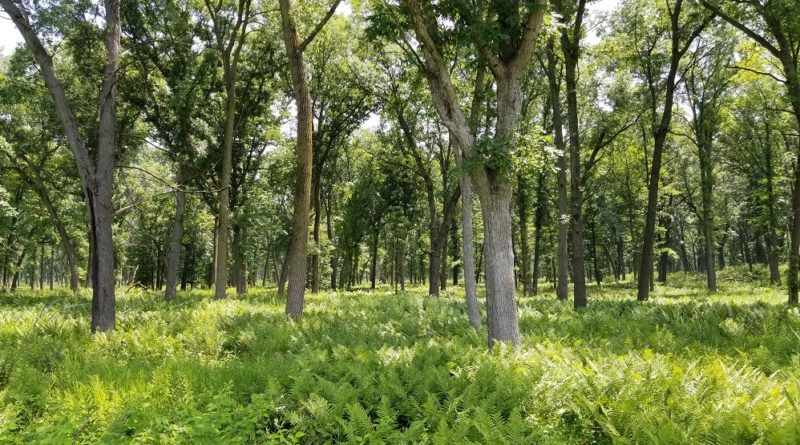Get Outside Already! Yeah, You!
Podcast: Play in new window | Download (Duration: 1:45:04 — 48.6MB)
Subscribe: Apple Podcasts | Spotify | Android | iHeartRadio | Podchaser | Email | TuneIn | RSS | More
Finding nature in and around Chicago
(July 7, 2019) When you read “Get Outside Already!” that’s me talking. Not Openlands, which recently launched the Openlands Get Outside Map. It’s a way to help you find out where and how to enjoy nature in the greater Chicago region. I’m going to let them explain it to you.
The Openlands Get Outside Map puts the user experience first, aggregating outdoors information for the Chicago Region into one convenient and easy-to-use tool. The map currently features information on 350 sites, ranging from national and state parks to county forest preserves to natural areas in parks across northern Illinois, northwest Indiana, and southeastern Wisconsin.
Users can filter by activities, such as walking, kayaking, camping, and biking; by site amenities, such as picnic shelters, education centers, and paved trails; or by site features, such as public transit access, equipment rentals, pet-friendly policies, and free programs. Users can also enter an address or zip code to find sites closest to them. Each site includes a list of benefits and activities, site photos, a link for directions through Google Maps, and links to event calendars and other information.
Okay, I get that part. But I have a question about how the map is set up. Which is why we have Openlands Manager of Communications Patrick Williams with us today. I’m going to make him walk us through how the map works.
We’re also going to touch on a sudden reversal in efforts to possibly extend Route 53 into Lake County, Illinois. In a letter to Illinois Tollway board directors, Executive Director José Alvarez said Friday that “At this time, the Illinois tollway is not in a position to lead the development of a project that lacks both local consensus and clear financial viability.”
Openlands released a statement praising the decision to kill the project. Said President and CEO Jerry Adelmann,
“Openlands commends the Illinois Tollway’s decision to forgo completion of the Tri-County Access project in Cook, Lake, and McHenry counties. The proposed route of the Tri-County Access project would have directly harmed some of the region’s most scenic and valued natural areas, including Volo Bog State Natural Area, Lake County’s Liberty Prairie Reserve, Heron Creek Forest Preserve, McHenry County’s Glacial Park, and Hackmatack National Wildlife Refuge. We look forward to collaborating on the creation of comprehensive, complementary transportation plans that respect the health of communities, our region’s natural heritage, and the need to increase resiliency in a changing climate.”
All I can say is, “here, here.”
Speaking of climate change, we all know how wet this spring was in the Midwest.
According to the National Weather Service, three of the five wettest years on record in Chicago have occurred in the last decade, including 2018, which ranked fourth with over 49 inches of precipitation (the annual average is around 36 inches). And we are starting to see these weather patterns happen annually. During one 24-hour period in July 2017, Lake County, IL received over seven inches of rain. The Governor declared a state of emergency. In 2018, Lake County was under flood conditions on six separate occasions. And this past May was the wettest ever for the month, surpassing the record set only last year.
That’s why the Lake County Stormwater Management Commission is hosting a series of upcoming meetings where residents can voice their concerns.
As you can see, there’s a lot of environmental news to talk about. We’re pleased to have Patrick Williams with us in studio.
Growing vegetables, changing lives
If I asked you where Chicago’s first and only USDA certified organic high-production farm was located, could you tell me? If I said it was in the Englewood Neighborhood, would you be surprised? Well, don’t be. Since 2006, Growing Home has been growing local in Englewood and, in the process, changing lives for the better.

Growing Home’s mission is to operate, promote, and demonstrate the use of organic urban agriculture as a vehicle for job training, employment, and community development. But their work is important for another reason. They provide opportunities for individuals with criminal records, low education, lack of work history, and other extreme barriers to workforce entry.
How successful have they been? “In 2018, 86% of their graduates found employment while the farm produced over 25,000 pounds of food.”
Their Wood Street and Honore Street Farms provide .87 acres of cultivable land smack in the middle of Chicago. And, in 2012, those farms earned Growing Home the Chicago Neighborhood Builders Award.
On May 28 of this year, however, Impact Grants Chicago truly had an impact on the organization. As part of $530,000 in grants, it awarded Growing Home $100,000 at a ceremony at the The Geraghty in Chicago. Impact Grants Chicago inspires women to improve the community by collectively funding $100,000 grants to Chicago nonprofits that are dedicated to addressing the challenges facing the city.
So what are they going to do with all of that cash? In a newsletter post, Growing Home states that
This grant will allow Growing Home to construct a 16,500 sq. ft. organic urban farm, expanding our currently two-farm campus in Englewood to three! The new farm will yield an estimated 8,000 pounds of produce per year, all of which Growing Home will keep within the Englewood community through affordable sales and donations. This will increase the amount of organic produce we distribute in Englewood to approximately 52,000 servings per year.
Not bad. Actually, much better than not bad.
On March 25, 2019, Danielle K. Perry, Esq. became the executive director of Growing Home when Harry Rhodes stepped down after 17 years. Here’s the YouTube video of her presentation for Impact Grants Chicago. We welcome her to this morning’s show.
Responsible mosquito control
We’re right in the middle of mosquito season in the Midwest. So I’ll cut to the chase, courtesy of the Midwest Pesticide Action Center.
According to the U.S. Centers for Disease Control and Prevention, and the American Mosquito Control Association, the airborne spraying of pesticides, commonly called mosquito ‘fogging’, to kill adult mosquitoes is the least effective method to control mosquito populations. Fogging usually consists of spraying or fogging pesticides from the back of a truck or plane.
This method is ineffective because the pesticide only kills those mosquitoes flying in the spray; mosquitoes behind buildings or under vegetation are not affected. Airborne pesticides are particularly harmful as they may be easily ingested by humans and wildlife. Pesticide residue can also be left behind on items kept outdoors, such as children’s toys and outdoor furniture, or tracked inside on shoes. Since fogging also kills insects that eat mosquitoes, it can cause future population booms for local mosquitoes.
So what’s the smart way to control mosquitoes? First, eliminate standing water–in bird baths, pool covers, pet bowls, clogged gutters and more. But if the water source is too large, reach for Mosquito Dunks®. They’re put out by a company called Summit and, yes, in the interest of full disclosure, they’re a sponsor of The Mike Nowak Show with Peggy Malecki.
But they’re also the responsible way of dealing with mosquitoes. Basically, you drop the Mosquito Dunk in the standing water and it kills the mosquito larvae before they become adults. The active ingredient is something called Bti. Here’s how the U.S. EPA explains it.
Bti is a biological or a naturally occurring bacterium found in soils. (Bti is short for Bacillus thuringiensis subspecies israelensis.) It contains spores that produce toxins that specifically target and only affect the larvae of the mosquito, blackfly and fungus gnat. EPA has registered five different strains of Bti found in 48 pesticide products that are approved for use in residential, commercial and agricultural settings primarily for control of mosquito larvae.
The EPA notes that Bti is not harmful to wildlife, honey bees, or humans, and it does not contaminate the water. Bill Stengel, National Sales Manager for Summit Responsible Solutions joins us today to talk about mosquito control strategies. And he reminds us that ticks are also a serious summer problem. Yup, Summit has a product for ticks, too, but Bill has control strategies for that unpleasant insect, too.
Hope you’re taking notes.
Is the Montrose Beach concert inevitable?
A couple of times in the past month, we’ve discussed a proposed concert at Montrose Beach. Briefly, an event called MAMBY on the Beach has, in the past, occurred on Chicago’s south side lakefront. This year, the organizers want to bring some 50,000 people over two days to hear music at Chicago’s most popular lakefront park on August 23 & 24. However, that park is also used for many other activities, including volleyball, hiking, dog-walking…and bird watching. Over a roughly 30 year period, Montrose Beach Dunes has become one of the most successful natural areas on the Great Lakes, thanks to a lot of volunteers and hard work.
It’s that success that might have led two piping plovers–an endangered bird species–to nest on the beach.
Conservationists are seeking to halt the festival’s move because Montrose Beach is home to a pair of piping plovers, an endangered bird species with just 70 or so breeding pairs remaining in the Great Lakes region.
“Based upon the breeding timelines for the piping plovers the Mamby on the Beach concert could interfere with their ability to successfully nest at this location,” said Carl Giometti, president of the Chicago Ornithological Society.
On June 22, we spoke to Giometti and to Leslie Borns, who is a Chicago Park District Volunteer Site Steward for Montrose Beach Dunes. Both expressed their concerns that the concert could have profound consequences for the natural area. Then, the following week, we talked with Douglas Stotz, senior conservation ecologist in the Keller Science Action Center at the Field Museum. He expressed the same concern. He was joined on the show by Paul Fehrenbacher, a member of the Montrose Lakefront Coalition (MLC), a non-profit group that includes all the major stakeholders at the Montrose recreational area. He reported that not a single member of that coalition wants the concert to come to Montrose Beach.
Then, this week, there was an ominous report in Block Club Chicago.
Now, a coalition of neighbors, along with environmental agencies, are urging the Chicago Park District require Mickelson to move his festival elsewhere. But Jam Productions co-founder Jerry Mickelson remained steadfast that the show will go on.
That, despite a comment by Policy Director For the Illinois Environmental Council Cary Shepard, who said that the festival could possibly lead to a lawsuit under the Endangered Species Act.
Now JAM Productions is apparently moving the festival a little north of Wilson Avenue and east of Weiss Hospital…which could cause new problems involving noise, parking access and more. Marianne Lalonde is president of the Lakeside Area Neighbors Association (LANA), the residential neighborhood due west of the Mamby event site. She tells me that in addition to the aforementioned issues, the Cubs are in town that weekend; the Chicago Triathlon is scheduled for Sunday all up and down Lake Shore Drive, along with family activities; there are concerts at the nearby Aragon Theater and…what could possibly go wrong?
I have a couple of questions. One, why in the world did the Chicago Park District make this deal in the first place? Actually, that’s my only question. Marianne Lalonde joins us this morning.

